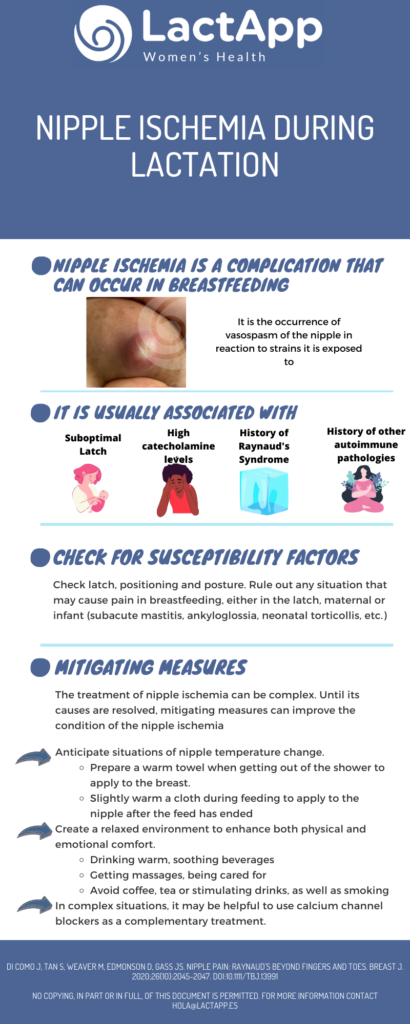
Nipple ischemia during breastfeeding
Nipple ischemia in breastfeeding (vasospasm) is a phenomenon that occurs in certain situations.
Raynaud’s syndrome, or intermittent ischemia, typically affects the extremities of the body (fingers and toes). It occurs in 20% of women between 21 and 50 years of age. Its symptoms are blanching (becoming white) of the area (local vasoconstriction) followed by cyanotic discolouration, ending with erythema (local vasodilatation). Other added symptoms are pain, burning, numbness, pricking or stinging.
Nipple ischemia during lactation is underestimated. It can occur after feeding or at any other time in people who already have Raynaud’s syndrome or who have never had this condition before.
This condition may be so disturbing that it may cause stopping breastfeeding.
The aetiology of nipple ischemia is poorly studied, and there are no conclusive publications. Even so, it seems that the main causes of this syndrome are:
- Nipple compression (poor breastfeeding technique, positioning and attachment)
- Increase in catecholamines due to pain or stress
The usual recommendations when this phenomenon appears are:
- Assess and evaluate the latch. It is often related to nipple compression.
- Avoid exposure to cold.
- Apply heat locally when the condition appears
- Avoid vasoconstrictive substances, such as coffee, tobacco or other drugs.
- In severe cases, the literature suggests the possibility of using Nifedipine (calcium channel blocker). Caution with possible hypotension in the postpartum period.
